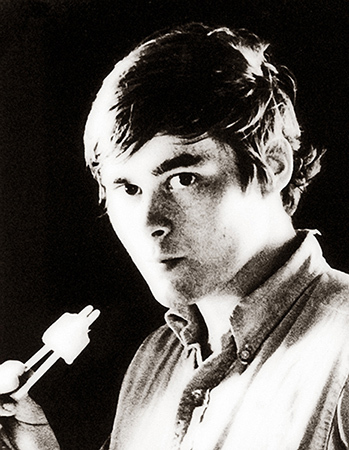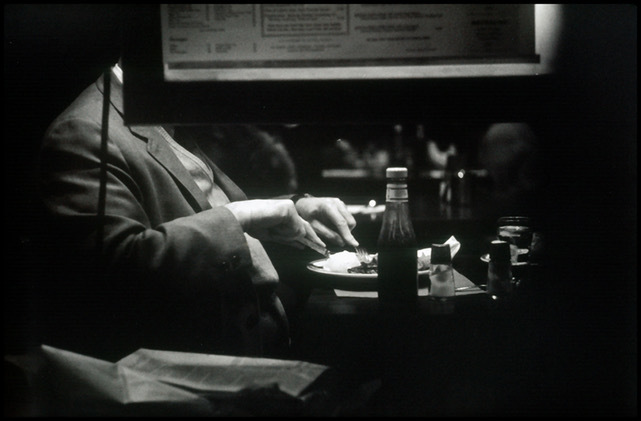Blog Author Richard Newman
I'm honored to be able to share this interview with Christopher James with you all, a great way to start the new year, enjoy.
Christopher, you're really the king of alternative images. Do you remember the first image that set your heart on fire?
Everyone has a story about that moment, the one often experienced alone… even when in the company of others, the instant when one of your life-strands is forever changed. This is mine. Taken in part from an article titled My First Photograph Copyright 2017.
In the late 60’s, a perfect and dangerous time to be 21, a group of invisible patrons, inspired by the seductive idealism of that era, and perhaps a little bit by the romantic notions of Robert Rimmer’s book, The Harrad Experiment, spent the better part of a year interviewing art students around the country. Their intention… putting 14 of them together with an equal number of free-spirited mentors, life and supplies on-the-house, with the single objective that we begin to work in a medium that was unfamiliar to us… presumably to determine how darkness was illuminated. I was tagged and became part of that tribe. I sold my BSA 500 Goldstar motorcycle to buy a very old VW with painted white angel wings, refrigerator tubing for brake lines and clothespins for throttle adjustments, and moved into a barn in an arts-centric commune in western Massachusetts called The Cummington Community.

Self Portrait with Popsicle, The Cummington Community, 1968
We listened to Dylan’s The Times They Are A-Changin, did improvisational theater, built salt kilns, used barns as canvases, and I constructed what I imagined to be a darkroom with my only reference being David Hemming’s English-loft workspace in Michelangelo Antonioni’s 1966 film Blow-Up. Unlike the loft, my selected space was an unused and crooked donkey shed walled with opaque black silage plastic from a local farm supply to eliminate the light. My plumbing was a green hose, that had seen better days, hooked up to the main barn where we all lived on a single open floor. My mom had given me an ancient Russian enlarger she had purchased for 50 cents at a local church flea market… unique in that would set a negative on fire for any exposure lasting more than 9 seconds. My safelight was a caver's headlamp with red cellophane… saved from a caramel apple wrapping.
On a run-a-way to New York, with fellow barn-mates, Martha and Tony, I had made exposures with my very first used camera, the exact same model, both precious and cheap, that Hemmings had photographed Veruschka on purple seamless in Blow Up. I was eager to see if it worked. I also had a manual, Enlarging Is Thrilling – Or the Joy of Making Big Ones Out of Little Ones, by Don Herald; a book printed in 1945 to serve as a manual for the Federal Model #269 enlarger in a suitcase for $39.50.
After processing my first roll of film in a tall Galliano bottle that I found behind the barn, I set up the donkey shed for printing. Selecting a frame, I placed the negative in the Russian enlarger’s negative carrier and exposed one of my 10 precious pieces of Agfa Portriga 111 paper, held flat to a board with masking tape, until I smelled the smoke. A deep breath in the darkness, I immersed my first paper exposure in a baking tray that held the Dektol developer. Nothing… and a lifetime of seconds later… my first photograph, of a carefully dressed man, eating alone in a Hayes-Bickford, at the intersection of 8th and 34th in Times Square, emerged. In that very moment, in the midst of my satori, I knew without hesitation where the rest of my life would be centered.
Christopher James, Sidewalk Supper, NYC, 1968
You were just the judge for TPS's alternative process competition, give me an overview of the work you saw and possibly why you chose the winners.
A few years ago, as I wrote in the 3rd edition of The Book of Alternative Photographic Processes, my wife, Rebecca, sent me an email (which was pretty odd considering she was laying next to me in bed) after reading an Amazon review of the 2nd edition of my book. The generous reviewer had written, “… James' book revives the discussion about "Imperfection" and its artistic merit. Every alternative print is unique and often imperfect. For the ancient Greeks, perfection was a prime requisite for high art and beauty, and this concept was revived during the Renaissance in art and in architecture. The question is whether artists today “want” to achieve perfection. The very beauty of alternative processes is its imperfection and unpredictability, and therein lies the beauty of such images. And each image is unique and irreproducible. There is also the great appeal of a haptic (referring to the sense of touch) approach that is missing in digital photography and in so many other high technology fields.”
Rebecca, who is inclined to see all things within their relationships to the natural world, wrote, “I believe the beauty of alternative processes IS the imperfection of these images… and our desire for it today stems from the cultural erosion of our connections to nature.”
This example of a dialogue, in which a discussion of syntax instigates a philosophical conversation about important things that are lost, or missing, is of huge interest to me… and especially true when considering the hand-made alternative photographic image and our emotional connections to the unique and imperfect beauty of those processes and the evidence of their imperfect artifacts.
This, of course… and thanks for your patience… leads me into an answer to your question. Many years ago it became clear to me that a generation raised with a camera attached to their telephone and an ever-greater bonding to the digitally generated image, where we all become as “good” as our software and hardware, had placed photography in a kind of mushy democracy where the criteria for excellence and artistry was gradually becoming undefined. The camera is always going to do what it was designed to do when you activated the shutter. Great moments of opportunity would always be taken advantage of by the most nimble and curious visual intellects. After that perfect moment, the voice of the artist began to speak in the making of the image. In this most recent TPS iteration of the alternative process exhibition selection, my third as the juror, the examples and inventions of what I think of as “new photography” were front and center and exciting to see.
In this competition, and increasingly among my MFA and workshop students, I am seeing a true and flourishing hunger for the accident… and the imperfections that are married to traditional studio practice and the hand-made image. At the same time, I am seeing a new polymorphic relationship of alternative processes, integrated media, and digital technologies where these skill sets are being employed to produce powerful visual statements, where context, syntax, and content are front and center and in harmony with the artist’s hand-made print intentions. These creative people are using the best and distinctive attributes of digital technologies to produce contact negatives and mixed discipline, two, and three-dimensional works that are unique and actively breaking new ground in the arts. This is what I was seeing in the TPS entries and it bodes well for the health of the hand-made photographic, light-marking, image.
- Your book is in it's third printing, that's amazing for any photo book let along one on alternative processing and the creation of a book is monumental, do you have a funny story about the production?
This last edition took over 5 years and there is, in my experience, not many funny stories attached to making a 900 page – 700 image book.
-
When you look at a students work and see real talent but questionable technique, what's your mentoring advice to that student?
Keep doing what you love to do and the technique will catch up with you when it needs to.
-
As you watch students develop what advice do you have to keep them on the right track?
Stop thinking that you have a show at MOMA coming up at the end of the semester.
- Since you have a very short period to influence students during a workshop, what's your favorite assignment for workshop students?
I never give assignments… only suggestions.
-
Do you have a favorite quote?
It used to be Sargent Preston’s Rule of the Yukon, “The views only change for the lead dog.” In the last few years it has changed to my Great Uncle Henry James’s last dying words, “Be kind, be kind, be kind.”
Christopher James is an internationally recognized artist and author. All three editions of his book, The Book of Alternative Photographic Processes (Cengage, NY) have received international critical acclaim and are universally recognized by artists, curators, historians and educators as the definitive text in the genre of alternative process image-making and photographically integrated media. James, after 13 years at Harvard University, is presently University Professor and Director of the MFA in Photography and Integrated Media program at Lesley University College of Art and Design in Cambridge, MA.